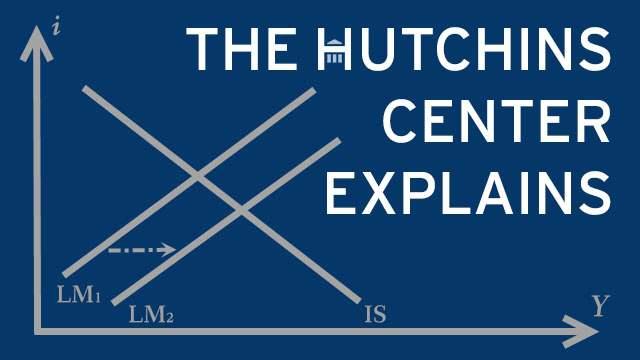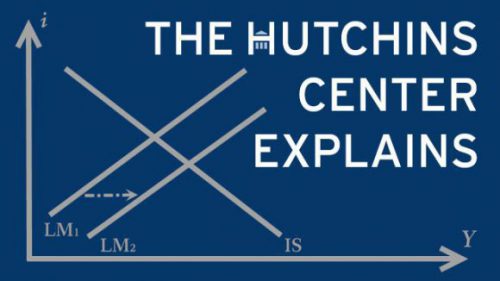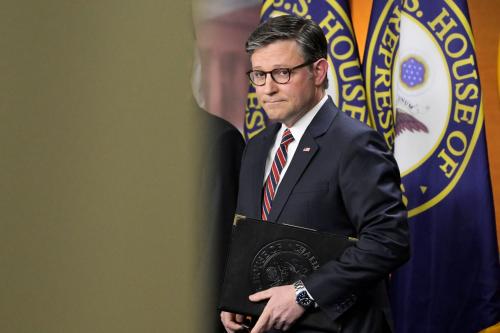What is a budget resolution?
A budget resolution is a non-binding Congressional outline for federal spending and revenues for the next fiscal year, along with targets for the following four fiscal years.
What does a budget resolution do?
Budget resolutions do not actually appropriate any funds or change any tax or spending laws, but instead set spending targets and revenue floors across 21 budget functions – e.g. national defense or transportation – and spending allocations for House and Senate appropriation and authorizing committees, and can include reconciliation instructions.
Budget resolutions often are a very public statement of spending and tax priorities by the party with a majority in the House and Senate. Paul Ryan (R, Wisc.), who was chairman of the House Budget Committee from 2011 to 2014, used them to highlight his vision for the federal budget.
For more on the competing budget plans for fiscal year 2016, which begins Oct 1, 2015, see the House Budget Committee Plan and the Senate Budget Committee Plan.
What is the budget resolution process?
After the President’s budget request is released, the House and Senate Budget Committees begin crafting their own budget plans. Once these drafts are completed, they are sent to the House and Senate floors. After each resolution has been amended and passed by a majority vote, they are sent to a House and Senate conference where the differences are reconciled. The resulting budget plan, referred to as a concurrent budget resolution, is then voted on again in each chamber and cannot be filibustered. If passed in both the House and Senate, the concurrent budget resolution becomes binding on Congress. When this process is completed, the spending allocations are given to the appropriation and authorizing committees, which write the bills that actually appropriate spending and change direct (or mandatory) spending, subject to a vote by the full House and Senate.
How are budget resolutions enforced?
Because these resolutions are not signed by the President, they don’t carry the force of law, but there are procedural rules, created by the Congressional Budget and Impoundment Control Act of 1974, that allow budget resolutions to be enforced. If an appropriation subcommittee attempts to appropriate more than was allocated in the concurrent budget resolution, any Senator may raise a point of order blocking the appropriation – a parliamentary move that can only be waived by 60 votes.
What is reconciliation?
Reconciliation is a process that instructs Congressional committees that oversee taxes and benefits to propose changes to law to bring spending or revenue levels into compliance with budget levels set by the budget resolution. The process is triggered when a concurrent budget resolution includes a “reconciliation instruction.” This instruction directs one or more committees to propose changes to current mandatory or tax programs to attain a specific amount of changes in spending or revenues over certain periods of time. When these proposals are sent back to their respective budget committees, they are compiled into a single bill and sent to the floor for a filibuster-proof vote.
What happens if Congress does not pass a budget resolution?
In recent years, this has become more common: Concurrent budget resolutions were adopted for each fiscal year from 1976 to 1998, but only eight have been adopted for the 17 years since; there were no concurrent resolutions for fiscal years 2011-2015. In a situation with no budget resolution, there are a variety of ways in which Congress can still make allocations to the appropriation committees.
In the last few years, Congress has been able to rely on the allocations and budget caps for 2014 and 2015 set in the Bipartisan Budget Act of 2013. However, with Republican majorities in both the House and Senate in 2015, there is pressure to pass a concurrent resolution.
Failure to pass a budget resolution is an embarrassment to Congress, but has limited practical effect. Only if Congress fails to enact appropriations bills can the government be shut down.
Where can I learn more about budget resolutions and reconciliation?
Congressional Budget Resolutions: Historical Information – Congressional Research Service
The Congressional Budget Process: A Brief Overview – Congressional Research Service
Policy Basics: Introduction to the Federal Budget Process – Center on Budget and Policy Priorities
Reconciliation Directives: Components and Enforcement – Congressional Research Service
The Brookings Institution is committed to quality, independence, and impact.
We are supported by a diverse array of funders. In line with our values and policies, each Brookings publication represents the sole views of its author(s).




Commentary
The Hutchins Center Explains: Budget Resolutions
March 26, 2015